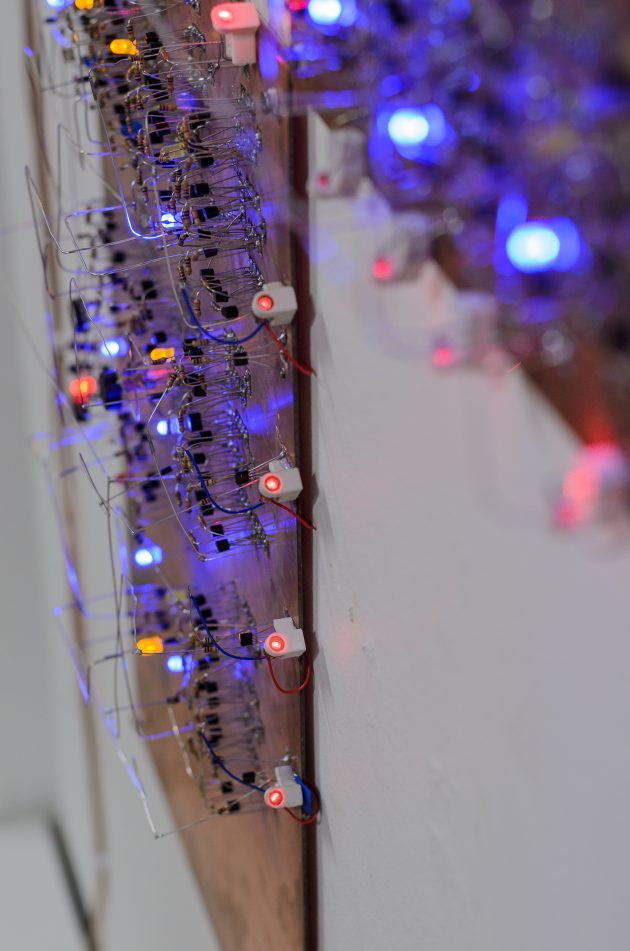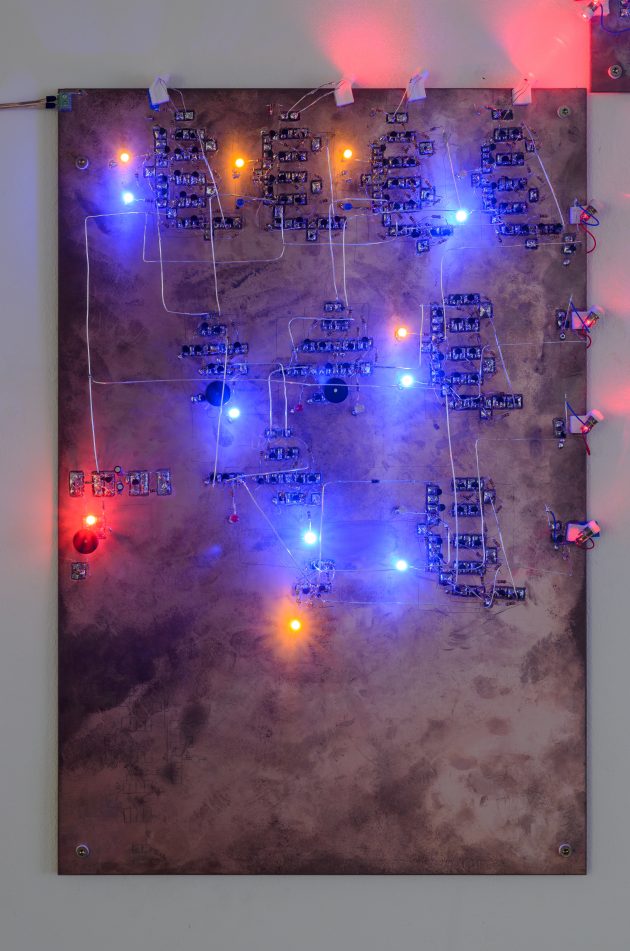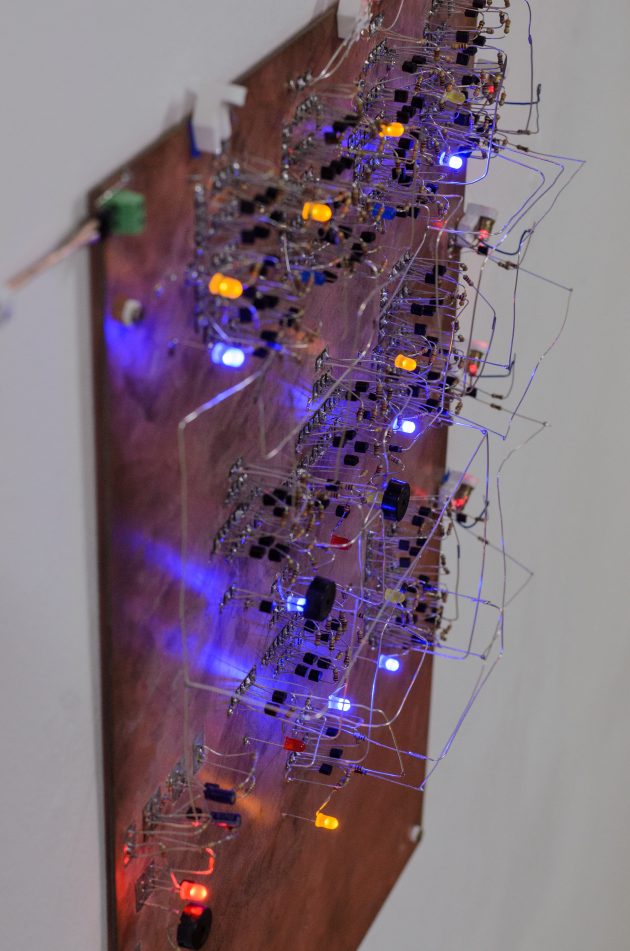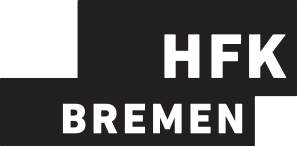1953

1953 – Exploring Digital Computing is a technological experiment about pure transistor circuits. It takes its inspiritation from so called 2nd generation computers, especially the 1953 Transistor Computer of the Manchester University. The ability to design logic circuits without using Integrated Circuits, ICs, seems to be lost. The rediscovering of this knowledge is the incentive of 1953.

The experiment consists of two board, each with the abilities to read, store, process and write data. This is realised by Manhattan Style boards using transistor circuits.
Both boards have D-Flip-Flops, four respectively reading the photoresistors, at which the lasers of the other board are pointing. The value is stored as a bit inside the Flip-Flop. Furthermore both of the boards a have clock made of astable transistor multivibrators, each pulsing at 1 repectively 3 Hertz and sending signals for data processing.

The first boards adds the stored values of the Flip-Flops in a 2-Bit-Full-Adder. Bit 0 is stored in another Flip-Flop and send unaltered whilst Bit 1 is inverted Bit 0. Bit 1 of the adder is an offsetting of the sum A1B1 and Bit 2 of the adder, which is the carry. It gets stored and written as Bit 2 and 3.

The second board has a Circular-Right-Shifter which shifts the Bits to position n-1 apart from Bit 0 which gets shiftet to n+3. Bit 0 and 1 get written unchanged, Bit 2 and 3 get offsetted. Bit 2 gets written unchanged and Bit 3 inverted.


